Table of Contents
Toggle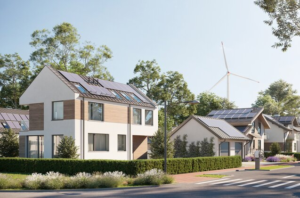 A housing colony with solar panels on the roof
A housing colony with solar panels on the roof
A. Introduction:
The future of green housing isn’t just a dream; it’s coming together quickly. Green housing is becoming more than just a trend; it’s evolving into a standard for sustainable living. As climate change and environmental concerns grow, there’s an urgent need to rethink how we build and inhabit homes.
Imagine homes that make their own clean energy, roofs covered in lush plants, and materials that are both beautiful and strong enough to withstand changes in the climate. With more people needing homes, there needs to be more cheap housing that is also environmentally friendly. 3D printing and modular building are two new technologies that are changing the way homes are built and making eco-friendly homes available to everyone.
Imagine a world where smart home technology does more than just make your life easier. It also helps the environment. There are now home energy control systems that make the best use of energy, and homes that are built to withstand natural disasters are stronger. The materials are changing too. Sustainable materials are made to last, to be flexible, and to be good for the environment.
Comfort, technology, and caring for the environment will all work together in the homes of the future, which will lead to a better, smarter, and more sustainable future.
B. Top trends in green housing for the future
The shift toward sustainable living has transformed how we design and build homes. From energy-efficient designs to eco-friendly materials, green housing is no longer a niche market but a mainstream movement. This article explores the top trends that are shaping the future of green housing and transforming the housing industry.
1. Energy-Efficient Designs and Passive Houses
Energy efficiency is at the core of green housing trends. Passive houses, which focus on maximizing insulation, natural ventilation, and minimal heating and cooling needs, are gaining popularity. These homes require little energy to maintain a comfortable indoor temperature, significantly reducing their carbon footprint.
- High-quality insulation for minimal energy loss
- Triple-glazed windows to retain indoor temperatures
- Heat recovery ventilation systems for air quality without energy waste
2. Renewable Energy Integration
A key trend in the future of green housing is the use of renewable energy sources, such as solar, wind, and geothermal energy. Integrating renewable energy systems not only makes homes more self-sufficient but also reduces the reliance on non-renewable energy sources.
- Solar panels are becoming standard in green homes
- Wind turbines are used in suitable locations for additional energy generation
- Geothermal systems offer efficient heating and cooling options
3. Use of Sustainable and Recycled Materials
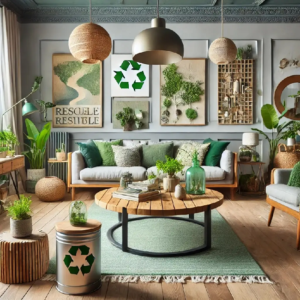
The demand for sustainable materials has grown, with a focus on reducing waste and minimizing environmental impact. Recycled and upcycled materials are not only eco-friendly but also add unique character to homes.
- Reclaimed wood and recycled metal reduce the need for new resources
- Natural materials such as bamboo and cork are sustainable alternatives
- Non-toxic paints and adhesives improve indoor air quality
4. Water Conservation Systems
Water conservation is a critical component of green housing. Innovative systems for reducing and reusing water are being incorporated into green homes, making them more sustainable and efficient.
- Rainwater harvesting systems collect water for non-potable uses
- Greywater recycling reuses water from sinks and showers
- Low-flow fixtures and smart irrigation conserve water use
5. Smart Home Technology
Smart home technology is revolutionizing green housing by making homes more efficient and responsive. These systems allow homeowners to control energy usage and monitor water consumption remotely, providing convenience and energy savings.
- Smart thermostats adapt to usage patterns and optimize energy
- Lighting automation minimizes energy use in unoccupied areas
- Water and energy monitoring systems track consumption in real-time
C. Technological innovations shaping green housing :
Technological Innovations Shaping Green Housing
Technological advancements are revolutionizing the green housing industry, providing new ways to improve energy efficiency, sustainability, and overall living comfort. As we look toward the future of green housing, several groundbreaking innovations are setting the stage for eco-friendly homes that are smarter, more efficient, and increasingly accessible. Here, we explore some of the most impactful technological innovations transforming green housing.
1. Smart Home Automation
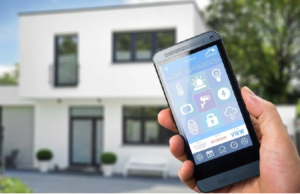
Smart home technology is one of the most significant advances in green housing, allowing residents to manage energy consumption with a few taps on a screen. This technology not only enhances convenience but also enables homes to operate at optimal energy levels.
- Smart thermostats adjust heating and cooling based on occupancy and weather forecasts, reducing energy waste.
- Automated lighting systems ensure lights are only in use when needed, with dimming and timed options.
- Voice-activated controls for energy-saving appliances make it easy to monitor and control energy usage.
2. Internet of Things (IoT) Integration
The Internet of Things (IoT) connects various home devices, creating a network of energy-efficient systems that communicate with each other. IoT technology in green housing enhances resource management and provides insights into energy usage patterns.
- Energy monitors analyze consumption patterns and suggest adjustments to reduce waste.
- Water leak sensors and smart irrigation systems help conserve water.
- Occupancy sensors ensure appliances and lights operate only when necessary.
3. Advanced Energy Storage Solutions
Energy storage has come a long way, making it feasible for homes to rely more heavily on renewable energy. Battery storage solutions like the Tesla Powerwall allow homes to store excess solar power and use it when needed, even during cloudy days or power outages.
- Home batteries store solar energy for nighttime or during outages.
- Grid integration allows homeowners to sell back excess energy, offsetting costs and supporting local grids.
- Self-sustaining power solutions reduce dependency on external power sources.
4. Building Information Modeling (BIM)
BIM technology has revolutionized green building design, allowing architects and builders to optimize every aspect of a home’s construction for sustainability. This digital modeling process helps visualize energy usage, material efficiency, and other eco-friendly factors before a home is even built.
- Energy performance simulations predict heating, cooling, and lighting needs.
- 3D modeling enables architects to select sustainable materials and minimize waste.
- Lifecycle analysis ensures the home’s environmental impact is minimized from construction to occupancy.
5. Sustainable Heating and Cooling Systems
New technologies in heating and cooling are making green homes even more energy-efficient. Geothermal heating and cooling, for example, is a sustainable alternative that uses the earth’s natural temperature to maintain comfortable indoor environments.
- Geothermal heat pumps harness ground temperature for efficient climate control.
- Heat recovery ventilation systems recycle warm air, minimizing heating needs.
- Solar water heaters provide an eco-friendly way to heat water using the sun’s energy.
D. Role of sustainable energy in future housing developments
The Role of Sustainable Energy in Future Housing
Sustainable energy is a cornerstone of future housing developments, paving the way for a new era of eco-friendly living. As the demand for green housing rises, so does the need for reliable, renewable energy sources that reduce our dependence on fossil fuels. In this article, we examine the crucial role of sustainable energy in shaping future housing and creating a path toward more resilient and environmentally responsible communities.
1. Solar Energy Systems
Solar energy is one of the most accessible and widely adopted forms of sustainable energy in housing. Solar panels convert sunlight into electricity, which can power homes and reduce the strain on traditional energy sources.
- Photovoltaic (PV) panels capture sunlight for electricity production, especially useful in sunny climates.
- Solar water heaters use solar energy to heat water, reducing energy bills and fossil fuel consumption.
- Community solar farms allow entire neighborhoods to share a solar energy source, making green energy more accessible.
2. Wind Power for Residential Use

While more commonly associated with large-scale applications, wind power is increasingly being adapted for residential use in green housing projects. Small-scale wind turbines can be installed in areas with suitable wind resources, generating clean energy for individual homes or communities.
- Micro wind turbines can power small appliances or supplement solar energy.
- Wind and solar hybrid systems create a balanced, continuous energy supply.
- Community wind projects distribute wind energy across entire neighborhoods, reducing energy costs.
3. Geothermal Energy
Geothermal energy is a sustainable and highly efficient energy source for heating and cooling homes. By tapping into the earth’s stable underground temperature, geothermal systems provide consistent energy year-round without greenhouse gas emissions.
- Ground-source heat pumps use underground temperatures for heating and cooling.
- Enhanced geothermal systems (EGS) expand geothermal’s reach, making it viable for more areas.
- Hybrid geothermal solutions integrate with other renewable energy sources for optimal energy efficiency.
4. Hydrogen Fuel Cells
Hydrogen fuel cells are an emerging technology that could soon play a significant role in powering green housing developments. They produce electricity by combining hydrogen and oxygen, with water as the only byproduct, making them a clean and efficient energy source.
- Stationary fuel cells provide clean power for homes and small buildings.
- Fuel cells for backup power can reduce dependency on traditional generators.
- Potential for off-grid living is enhanced with fuel cells, especially when combined with solar or wind.
5. Energy-Efficient Appliances and Systems
Future green homes will likely include energy-efficient appliances that work with renewable energy sources to minimize overall energy consumption. These appliances and systems ensure that every watt of energy is used wisely, further supporting the goals of sustainable housing.
- Energy Star-certified appliances use less electricity and water.
- Induction stoves are more efficient and heat food faster than traditional stoves.
- LED lighting systems provide maximum lighting efficiency with minimal energy use.
E. How can green housing contribute to reducing carbon footprints?
How Green Housing Reduces Carbon Footprints
The concept of green housing is more than just a trend; it’s a transformative approach to building homes that prioritize sustainability and environmental responsibility. Green housing is crucial in reducing carbon footprints and combating climate change, thanks to eco-friendly designs, energy-efficient systems, and sustainable materials. Here’s how green housing plays a pivotal role in reducing the environmental impact of residential buildings.
1. Energy-Efficient Building Designs
Green housing emphasizes energy-efficient designs that lower the amount of energy required for heating, cooling, and lighting. By minimizing energy use, these homes significantly reduce their greenhouse gas emissions and, consequently, their carbon footprint.
- Insulated walls and windows prevent heat loss in winter and keep homes cool in summer, reducing energy demand.
- Passive solar design captures sunlight during winter while avoiding excess heat in summer.
- Natural ventilation systems reduce reliance on air conditioning and improve indoor air quality.
2. Use of Renewable Energy Sources
One of the primary ways green housing reduces carbon footprints is by incorporating renewable energy sources, such as solar and wind power, to generate electricity. Using clean, renewable energy eliminates the need for fossil fuels, which are significant contributors to carbon emissions.
- Solar panels can power everything from lights to heating systems, lowering dependency on non-renewable sources.
- Wind turbines provide supplemental power where wind resources are sufficient.
- Geothermal heating offers efficient heating and cooling with minimal environmental impact.
3. Low-Carbon Building Materials
Traditional construction materials, like cement and steel, have high carbon footprints due to their energy-intensive manufacturing processes. Green housing reduces environmental impact by opting for low-carbon alternatives that are sustainably sourced.
- Bamboo grows quickly and absorbs large amounts of CO₂, making it a renewable choice.
- Recycled metal and reclaimed wood minimize the need for new resources.
- Hempcrete and rammed earth have lower embodied energy compared to traditional concrete.
4. Water Conservation Strategies
Green homes often include water conservation measures that reduce the need for energy-intensive water treatment and distribution processes. By conserving water, green housing reduces the overall energy used and its associated carbon emissions.
- Rainwater harvesting systems collect water for landscaping and non-potable uses, reducing the demand on municipal water supplies.
- Low-flow faucets and showerheads conserve water without sacrificing performance.
- Greywater recycling systems reuse water from showers and sinks, lowering fresh water demand.
5. Sustainable Landscaping
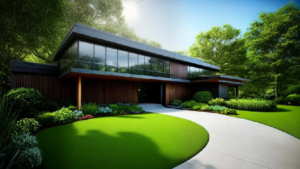
Sustainable landscaping is an essential feature of green housing that lowers carbon emissions while enhancing the home’s environmental footprint. Native plants, permeable surfaces, and energy-efficient outdoor lighting contribute to a low-impact lifestyle.
- Xeriscaping reduces water usage by using drought-tolerant plants.
- Green roofs provide insulation, absorb CO₂, and promote biodiversity.
- Permeable pavement reduces stormwater runoff and prevents soil erosion.
6. Indoor Air Quality and Health Benefits
Better indoor air quality reduces the need for heating, ventilation, and air conditioning (HVAC) systems, which can be significant energy consumers. Improved indoor air quality also enhances health, decreasing the need for medical interventions and their associated environmental costs.
- Natural ventilation allows fresh air in, reducing HVAC usage.
- Non-toxic materials like low-VOC paint improve air quality without emitting harmful chemicals.
- Air-purifying plants further improve indoor air, reducing the need for mechanical filtration.
F. the latest eco-friendly materials being used in housing construction :
Latest Eco-Friendly Materials in Housing Construction

With the rise of green housing, the demand for eco-friendly construction materials has also increased. Traditional building materials are being replaced with sustainable options that are renewable, energy-efficient, and lower in environmental impact. Here’s a look at some of the latest eco-friendly materials transforming housing construction.
1. Bamboo
Bamboo is one of the most sustainable materials in construction. It grows rapidly, replenishes easily, and requires minimal water, making it a great eco-friendly option for various building applications.
- Strength and durability make it suitable for flooring, walls, and furniture.
- Quick growth cycle allows for sustainable harvesting.
- Versatile design applications offer an attractive, natural look in homes.
2. Hempcrete
Hempcrete is a biocomposite material made from hemp fibers, lime, and water. It’s an eco-friendly alternative to traditional concrete, with a lower carbon footprint and better insulating properties.
- Lightweight and durable yet provides effective insulation.
- Carbon sequestration during production helps reduce CO₂ levels.
- Non-toxic and breathable, contributing to healthier indoor air.
3. Recycled Steel
Steel is energy-intensive to produce, but using recycled steel in construction significantly reduces its environmental impact. Recycled steel is durable, versatile, and commonly used in framing and structural applications.
- High strength makes it ideal for structural support.
- Recyclable nature supports sustainable construction practices.
- Reduced mining needs contribute to environmental conservation.
4. Rammed Earth
Rammed earth is a centuries-old construction technique that has recently gained popularity in eco-friendly housing. Walls made of compressed earth are naturally insulating, fire-resistant, and have a low environmental impact.
- Thermal mass properties reduce the need for heating and cooling.
- Natural, non-toxic materials make it a safe choice.
- Aesthetic appeal provides a unique, natural look to homes.
5. Cork
Cork is a renewable resource harvested from cork oak trees. The outer bark is removed without harming the tree, allowing it to regrow over time. Cork is versatile, durable, and often used in flooring and insulation.
- Excellent insulation properties make it ideal for walls and floors.
- Fire-resistant and resistant to mold and mildew.
- Soft, resilient surface creates a comfortable, quiet environment indoors.
6. Straw Bales
Straw bales offer an unconventional yet effective method for building eco-friendly homes. Compressed straw bales provide excellent insulation and reduce reliance on synthetic materials.
- High insulation value helps maintain a comfortable indoor climate.
- Abundant and renewable as a byproduct of agriculture.
- Cost-effective alternative to traditional insulation materials.
7. Reclaimed and Recycled Wood
Reclaimed wood is salvaged from old buildings, barns, and other sources, reducing the need for new lumber. It’s a sustainable option that adds character to homes with a rustic or vintage style.
- Low environmental impact as it reuses existing materials.
- Unique, weathered aesthetic provides a distinctive look.
- Durable and strong due to its age and seasoning.
G. Influence of smart homes on the future of green housing:
Smart Homes and Their Influence on Green Housing
Smart homes are redefining green housing, offering automated systems that enhance energy efficiency, reduce waste, and improve comfort. As smart technology continues to advance, it’s reshaping the green housing landscape in remarkable ways. Here’s how smart homes are influencing the future of green housing.
1. Energy Monitoring and Optimization
Smart homes are equipped with energy monitoring tools that track and analyze consumption, allowing homeowners to optimize their energy use. These systems can suggest energy-saving adjustments and help lower utility bills.
- Energy meters provide insights into daily consumption patterns.
- Smart plugs control appliances, reducing standby power use.
- Adaptive learning thermostats adjust settings based on usage trends.
2. Remote Home Management
With remote access, homeowners can monitor and control energy use from anywhere. This level of control ensures energy is only used when necessary, reducing waste and supporting a sustainable lifestyle.
- Smartphone apps allow users to turn off lights or appliances remotely.
- Automated systems manage lighting, heating, and cooling based on occupancy.
- Customized scheduling adjusts energy use according to individual needs.
3. Water-Saving Innovation
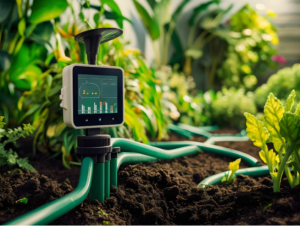
Smart home technology includes water-saving features that prevent waste and lower water bills. These systems are particularly valuable in areas prone to drought or where water conservation is prioritized.
- Smart irrigation systems adjust watering schedules based on weather data.
- Water leak sensors prevent damage and detect leaks early.
- Automated faucets control water flow, minimizing wastage.
4. Enhanced Security with Energy Efficiency
Smart security systems in green homes go beyond safety by also contributing to energy savings. Motion sensors, smart locks, and other devices work efficiently without draining resources.
- Motion-activated lighting conserves energy by lighting only occupied spaces.
- Smart window locks help maintain insulation, improving energy efficiency.
- Surveillance cameras that operate on solar power reduce dependency on electrical power.
5. Integration with Renewable Energy
Smart homes are increasingly integrated with renewable energy sources, making it easier for homeowners to manage and maximize green energy use. Solar power systems, for instance, work with smart grids to provide real-time energy usage insights.
- Smart inverters convert solar energy more efficiently.
- Battery storage management optimizes stored energy for peak times.
- Smart grid compatibility allows homes to sell back excess energy.
H. The cost implications of building and living in green homes:
Cost Implications of Building and Living in Green Homes
One of the primary considerations in adopting green housing is the cost. While eco-friendly homes often require an upfront investment, they offer long-term savings and environmental benefits that make them a financially sound choice over time. This article dives into the costs associated with green housing, from initial construction expenses to long-term savings and lifestyle benefits.
1. Initial Construction Costs
Building a green home typically involves higher initial costs compared to traditional homes, mainly due to eco-friendly materials and advanced technologies. However, as demand for green building supplies and expertise grows, these costs are gradually becoming more competitive.
- Sustainable materials like bamboo, reclaimed wood, and recycled metal may cost more but have long lifespans.
- Renewable energy systems, such as solar panels and geothermal pumps, require upfront investment but reduce future energy bills.
- Advanced insulation and energy-efficient windows contribute to a higher initial cost but significantly reduce heating and cooling expenses.
2. Government Incentives and Rebates
Various government programs help offset the initial costs of building or upgrading to a green home. Incentives and rebates make eco-friendly housing more affordable and accessible to a broader population.
- Tax credits reduce costs for installing renewable energy systems like solar.
- Energy-efficiency rebates apply to items like efficient HVAC systems, windows, and insulation.
- Financing options like green mortgages provide favorable rates for eco-friendly home investments.
3. Long-Term Savings on Utility Bills
The most significant financial benefit of green homes is the reduction in ongoing utility costs. Energy-efficient systems and renewable energy sources allow homeowners to save on electricity, water, and heating bills over time.
- Solar panels can lead to major energy savings by reducing electricity costs.
- Energy-efficient lighting and appliances consume less power, cutting monthly expenses.
- Water-saving fixtures reduce water bills, especially in areas with high water costs.
4. Maintenance and Repair Costs
Green homes are often designed to be low-maintenance, with durable materials that reduce the need for frequent repairs or replacements. While the upfront costs for some green materials are higher, their longevity offers financial benefits.
- Long-lasting materials like reclaimed wood and composite roofing reduce replacement costs.
- Smart home technology allows for remote maintenance and early problem detection.
- High-quality insulation minimizes wear on HVAC systems, reducing repair needs.
5. Property Value and Resale Potential
Eco-friendly homes are increasingly desirable in the real estate market, with buyers willing to pay a premium for sustainable features. Green homes are expected to appreciate in value as environmental awareness grows, making them a worthwhile investment.
- Enhanced marketability due to energy efficiency and sustainable design.
- Higher resale value driven by energy savings and environmental benefits.
- Tax advantages may apply for green-certified homes, adding value for buyers.
6. Lifestyle Benefits and Health Savings
Green homes provide health and lifestyle benefits that indirectly reduce costs by promoting a healthier, more comfortable living environment. Improved indoor air quality, natural lighting, and reduced exposure to toxic materials contribute to better health and well-being.
- Improved indoor air quality leads to fewer respiratory issues and related healthcare costs.
- Natural lighting promotes mental health and reduces lighting costs.
- Non-toxic materials reduce the risk of long-term health issues related to VOC exposure.
I. Examples of successful green housing projects around the world:
Examples of Successful Green Housing Projects Worldwide
Around the world, innovative green housing projects are setting new standards for sustainable living. These projects showcase cutting-edge designs, materials, and technologies that promote environmental stewardship and inspire future green housing initiatives. Here, we highlight some of the most notable green housing projects from various countries.
1. BedZED (United Kingdom)
The Beddington Zero Energy Development (BedZED) in London is one of the UK’s most ambitious eco-communities. This housing project combines energy-efficient design, renewable energy, and sustainable materials to create a self-sufficient, low-impact community.
- Zero-carbon community with energy-efficient homes and shared green spaces.
- Passive solar heating and wind power support energy needs.
- Car-sharing programs reduce the project’s carbon footprint.
2. Bosco Verticale (Italy)
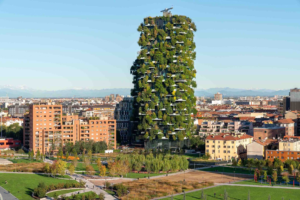
The Bosco Verticale, or “Vertical Forest,” is a remarkable residential project in Milan that incorporates greenery directly into the building’s structure. Each apartment is adorned with trees and plants, creating a living green facade.
- Thousands of trees and shrubs reduce CO₂ and improve air quality.
- Natural cooling effects from greenery reduce air conditioning needs.
- Biodiversity supports bird and insect species, contributing to urban ecology.
3. Masdar City (United Arab Emirates)
Masdar City in Abu Dhabi is an experimental eco-city designed to be carbon-neutral. This development integrates renewable energy sources, eco-friendly transportation, and sustainable housing to create a futuristic model of urban sustainability.
- Solar power and wind towers meet the city’s energy needs.
- Walkable urban design reduces the need for cars.
- Advanced water recycling conserves water in the desert climate.
4. Vauban (Germany)

Vauban, in Freiburg, is a model for sustainable urban planning and green housing. This neighborhood promotes energy efficiency, eco-friendly building materials, and community-focused living.
- Car-free streets encourage cycling and walking.
- Solar power supports many homes, reducing reliance on fossil fuels.
- Community-oriented design fosters social cohesion and sustainable practices.
5. Geos Neighborhood (United States)
The Geos Neighborhood in Colorado is a net-zero energy community that combines passive solar design, sustainable materials, and advanced water conservation strategies to create an eco-friendly residential area.
- Net-zero energy homes powered by solar energy and geothermal systems.
- Water-efficient landscaping supports the local ecosystem.
- Green building standards ensure durability and minimal environmental impact.
Conclusion:
Technological breakthroughs are fueling the growth of green housing, promoting sustainability and eco-friendly living habits. This transition towards sustainable living is boosting the quality of life for residents and promoting resilience against climate change. Innovations like energy-efficient materials, smart house systems, and renewable energy sources are boosting the sustainability of new buildings and retrofitting existing homes.
Collaboration between architects, engineers, and environmentalists is vital for producing sustainable housing, with public regulations and incentives making sustainable housing more available.
FAQs:
1. What is green housing?
Green housing refers to sustainable homes designed to minimize environmental impact. They use energy-efficient technologies and eco-friendly materials.
2. Why is green housing important?
Green housing reduces carbon footprint, conserves resources, and improves indoor air quality. It promotes healthier and more sustainable living.
3. What are the Key Trends in Green Housing?
Key trends include energy-efficient appliances, solar power integration, smart home technology, water conservation systems, and sustainable building materials.
4. What are some innovative technologies in green housing?
Innovative technologies like geothermal heating and cooling, rainwater harvesting, and green roofs are transforming green housing.
5. How Can I Make My Home Greener?
Start with small steps like energy-efficient lighting, water-saving fixtures, and planting trees. Consider larger investments like solar panels or energy-efficient windows.
6. What are the benefits of Green housingreeng for the Environment?
Green housing reduces greenhouse gas emissions, conserves water, and minimizes waste. It promotes biodiversity and protects ecosystems.
7. How Does Green Housing Impact Health?
Green homes offer better indoor air quality, reduced exposure to pollutants, and improved thermal comfort. This can lead to better physical and mental health.
8. Is green housing affordable?
While initial costs may be higher, long-term savings on energy bills and reduced maintenance costs make green housing a worthwhile investment.
9. What government policies support green housing?
Many governments offer incentives like tax breaks, subsidies, and grants to promote green building and energy efficiency.
10. How Can I Get Involved in the Green Housing Movement?
Educate yourself, choose sustainable products, support green initiatives, and advocate for policies that promote green housing.

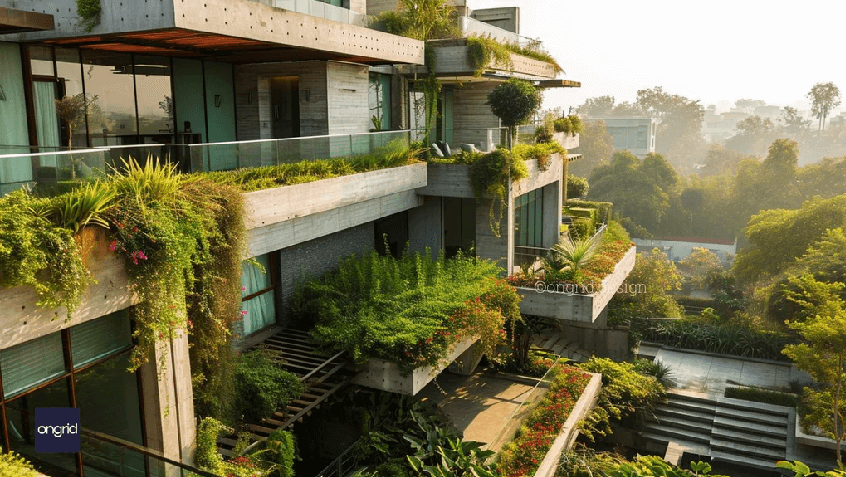
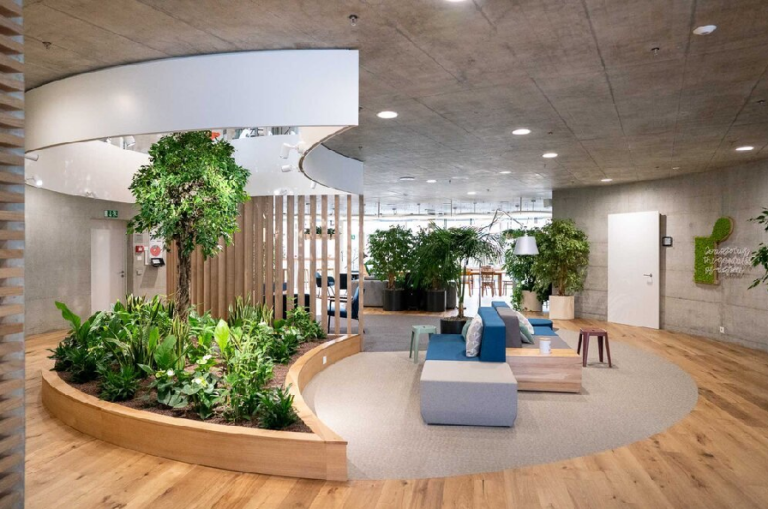
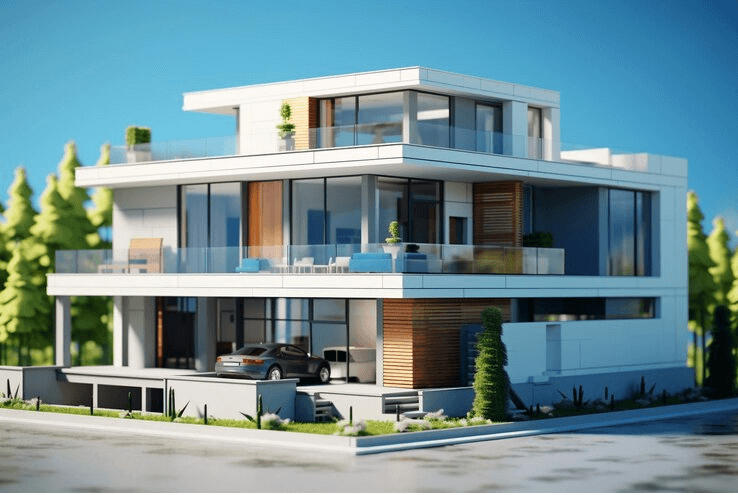
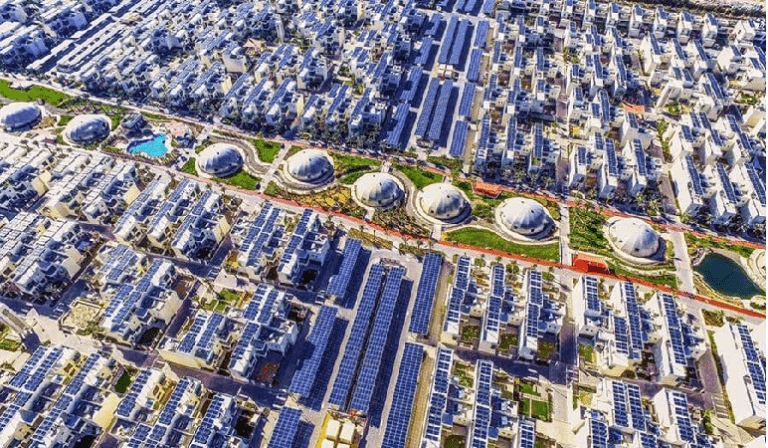
“I agree with your points, very insightful!”
“Amazing post, keep up the good work!”
“I appreciate the detailed explanation, very helpful!”
“This post has helped me solve my issue, thanks a ton!”
Your point of view caught my eye and was very interesting. Thanks. I have a question for you.